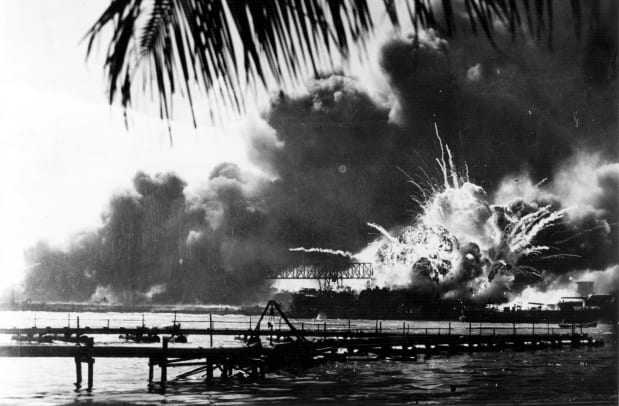During World War II, German forces begin their siege of Leningrad, a major industrial center and the USSR’s second-largest city. The German armies were later joined by Finnish forces that advanced against Leningrad down the Karelian Isthmus. The siege of Leningrad, also known as the 900-Day Siege though it lasted a grueling 872 days, resulted in the deaths of some one million of the city’s civilians and Red Army defenders.
READ MORE: The Siege of Leningrad
Leningrad, formerly St. Petersburg, capital of the Russian Empire, was one of the initial targets of the German invasion of June 1941. As German armies raced across the western Soviet Union, three-quarters of Leningrad’s industrial plants and hundreds of thousands of its inhabitants were evacuated to the east. More than two million residents remained, however, and the evacuated were replaced by refugees who fled to Leningrad ahead of the German advance. All able-bodied persons in the city—men, women, and children—were enlisted to build antitank fortifications along Leningrad’s edge. By the end of July, German forces had cut the Moscow-Leningrad railway and were penetrating the outer belt of the fortifications around Leningrad. On September 8, German forces besieged the city, but they were held at bay by Leningrad’s fortifications and its 200,000 Red Army defenders. That day, a German air bombardment set fire to warehouses containing a large part of Leningrad’s scant food supply.
Aiming to tighten the noose around Leningrad, the Germans launched an offensive to the east in October and cut off the last highways and rail lines south of the city. Meanwhile, Finnish forces advanced down the Karelian Isthmus (which had been seized from Finland by the Soviets during the Russo-Finnish War of 1939 to 1940) and besieged Leningrad from the north. By early November, the city was almost completely encircled, and only across Lake Ladoga was a supply lifeline possible.
German artillery and air bombardments came several times a day during the first months of the siege. The daily ration for civilians was reduced to 125 grams of bread, no more than a thick slice. Starvation set in by December, followed by the coldest winter in decades, with temperatures falling to -40 degrees Fahrenheit. People worked through the winter in makeshift armament factories without roofs, building the weapons that kept the Germans just short of victory.
Residents burned books and furniture to stay warm and searched for food to supplement their scarce rations. Animals from the city zoo were consumed early in the siege, followed before long by household pets. Wallpaper paste made from potatoes was scraped off the wall, and leather was boiled to produce an edible jelly. Grass and weeds were cooked, and scientists worked to extract vitamins from pine needles and tobacco dust. Hundreds, perhaps thousands, resorted to cannibalizing the dead, and in a few cases people were murdered for their flesh. The Leningrad police struggled to keep order and formed a special division to combat cannibalism.
Across frozen Lake Ladoga, trucks made it to Leningrad with supplies, but not enough. Thousands of residents, mostly children and the elderly, were evacuated across the lake, but many more remained in the city and succumbed to starvation, the bitter cold, and the relentless German air attacks. In 1942 alone, the siege claimed some 600,000 lives. In the summer, barges and other ships braved German air attack to cross Lake Ladoga to Leningrad with supplies.
In January 1943, Red Army soldiers broke through the German line, rupturing the blockade and creating a more efficient supply route along the shores of Lake Ladoga. For the rest of the winter and then during the next, the “road of life” across the frozen Lake Ladoga kept Leningrad alive. Eventually, an oil pipeline and electric cables were laid on the lake bed. In the summer of 1943, vegetables planted on any open ground in the city supplemented rations.
In early 1944, Soviet forces approached Leningrad, forcing German forces to retreat southward from the city on January 27. The siege was over. A giant Soviet offensive to sweep the USSR clean of its invaders began in May. The 872-day siege of Leningrad cost an estimated one million Soviet lives, perhaps hundreds of thousands more. The Soviet government awarded the Order of Lenin to the people of Leningrad in 1945, paying tribute to their endurance during the grueling siege. The city did not regain its prewar population of three million until the 1960s.


